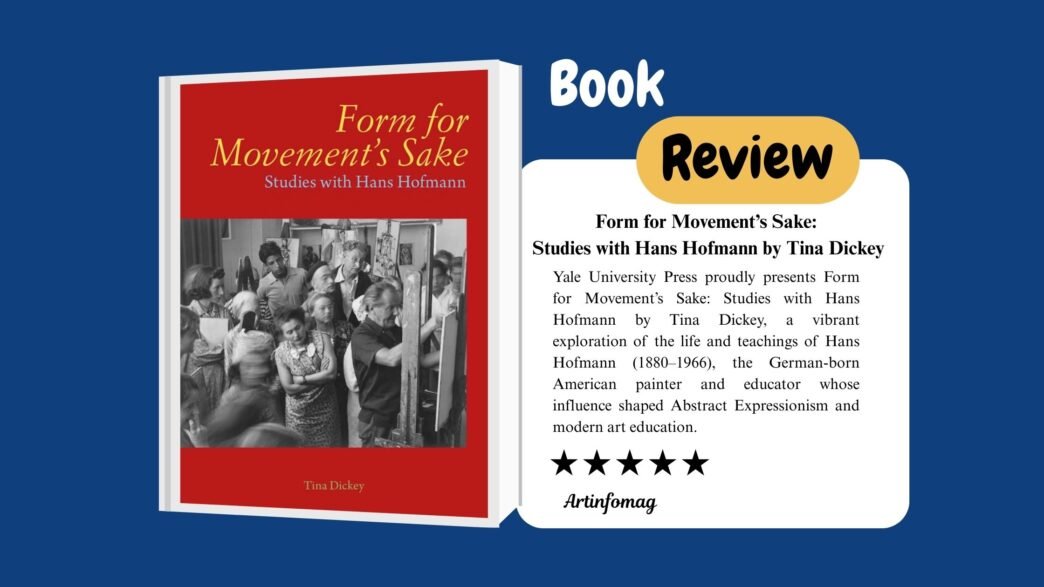Yale University Press proudly presents Form for Movement’s Sake: Studies with Hans Hofmann by Tina Dickey, a vibrant exploration of the life and teachings of Hans Hofmann (1880–1966), the German-born American painter and educator whose influence shaped Abstract Expressionism and modern art education. Released in October 2025, this book is a streamlined revision of Dickey’s acclaimed 2011 work, Color Creates Light, drawing on extensive oral histories with Hofmann’s former students, now housed in the Smithsonian’s Archives of American Art. Through vivid anecdotes, student artworks with Hofmann’s corrections, his own paintings and diagrams, and archival photographs, Dickey invites readers into Hofmann’s atelier, where his innovative approach to visual logic and compositional dynamics transformed students across disciplines. From Munich to New York, Hofmann’s legacy as a conduit for cultural and artistic innovation shines through. This book is a must-read for artists, educators, and anyone captivated by the creative process, offering a dynamic journey into the heart of modern art.
Form for Movement’s Sake weaves together Hans Hofmann’s teaching philosophy and biographical journey, structured in a unique bipartite format that alternates chapters on his pedagogy with “Chronicle” chapters tracing his life. Drawing from oral histories conducted by Tina Dickey starting in 1991, the book captures the voices of former students like Lillian Orlowsky, James Gahagan, and Wolf Kahn, who vividly recall Hofmann’s charismatic demonstrations. Chapters like “Power of Vision,” “Explorative Demonstration,” “Inner Relations,” “Color Light,” and “Pearls and Diamonds” delve into his teaching methods, exploring how he used charcoal and oil to guide students in understanding structural movement, volume, and color as dynamic forces. These sections are enriched with visuals like student works with Hofmann’s annotations, his own diagrams, and paintings that bring his lessons to life. The “Chronicle” chapters, including “Creature of Contradiction,” “Amid the Cubist Genesis,” “Emergent Immigrant,” “American Alien,” and “An Immigrant’s Success,” trace Hofmann’s evolution from Munich’s avant-garde to Paris’s modernist cafes, and finally to New York and Provincetown, where his schools became hubs of artistic community. Archival photographs and new research, such as Hofmann’s ties to the suffrage movement and Cubism’s origins, provide historical depth, while an appendix of student biographies highlights the diverse artists who carried his legacy forward.
The book celebrates Hofmann’s revolutionary approach to visual logic, which Dickey presents as a universal tool for composition across disciplines; painting, architecture, music, choreography, and literature. Hofmann’s emphasis on structural movement, rooted in concepts like Kugelprinzip (sphere principle) and Farbkristallisation (crystallization of color), taught students to see art as a living interplay of forms, planes, and colors. His demonstrations, described as spontaneous yet deeply rooted in his Munich training, encouraged students to intuit the “right situation” for creative expression, avoiding formulaic principles. Dickey highlights how Hofmann’s schools in Munich, New York, and Provincetown were not just institutions but movements, fostering communities where students collaborated as translators, organizers, and promoters of his work. The book also underscores Hofmann’s role as a cultural conduit, bridging European modernism with American innovation. New research reveals his engagement with early twentieth-century social movements, including women’s liberation in Munich, and his influence on Cubism through interactions with Ukrainian and Russian women artists. These insights, paired with stories of students like Ray Kaiser Eames and Perle Fine, illustrate how Hofmann’s teachings empowered diverse voices, making the book a compelling resource for understanding art’s role in exploring identity, community, and creativity.
Form for Movement’s Sake: Studies with Hans Hofmann is a dynamic tribute to a visionary whose teachings continue to inspire artists and thinkers worldwide. Tina Dickey’s masterful blend of oral histories, visual documentation, and historical context makes this book an essential addition for anyone passionate about art, education, or interdisciplinary creativity. Published by Yale University Press in October 2025, it’s available now at yalebooks.com for international readers.
Dive into Hofmann’s world, explore the logic of movement and form, and join the community of artists inspired by his legacy.




















